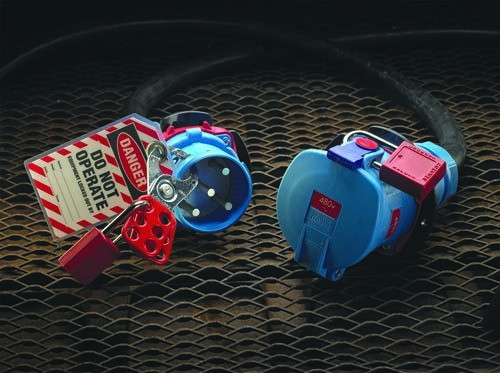Energized equipment and the Hierarchy of Controls
The NFPA 70E 2018 Hierarchy of Controls places “elimination” at the top of the inverted pyramid. But there are times when working on energized equipment can’t be avoided. What steps can we take to increase worker safety when electrical hazards can’t be fully eliminated?

Responding is Eduardo Torices, MELTRIC lead applications engineer, MELTRIC Corp., Franklin, WI.
“NFPA 70E: Standard for Electrical Safety in the Workplace” is recognized as the blueprint companies and individuals follow to avoid electrical hazards. It’s a mandatory component of every workplace safety program. NFPA 70E includes the Hierarchy of Controls. If adhered to, NFPA 70E helps decrease the likelihood of a worker experiencing an electrical incident or arc flash incident.
Energized equipment
Article 130.2 of NFPA 70E requires equipment and machinery greater than 50 volts to be placed into an “electrically safe work condition” before maintenance or repair work begins. This means completely de-energizing equipment, conductors or circuits before an employee begins work.
However, NFPA 70E allows for energized work “if the employer can demonstrate that de-energizing introduces additional hazards or increased risk.” Energized work should be the exception, not the rule. Only qualified persons (people trained and certified for 50-plus-volt energized work) can work on energized equipment. NFPA 70E requires documentation, including an energized electrical work permit, for energized work. Article 130.2(B) details permit requirements.
Approach boundaries and arc flash assessments
Whether equipment is energized or de-energized, another required safety practice is to perform an arc flash assessment and establish approach boundaries.
These tasks can be time-consuming and costly; however, these procedures save lives and shouldn’t be overlooked or discounted.
Should an electrical incident result in injury or death, OSHA investigates and levies steep fines against companies that don’t enforce these safety procedures.
Article 130 of NFPA 70E provides specific guidelines for conducting arc flash analyses and establishing approach and arc flash protection boundaries. Approach boundary tables are available in Section 130.4.
Equipment maintenance
Proper equipment and machine maintenance also help eliminate electrical and arc flash hazards. Energized equipment, including electrical cabinets, must be properly maintained and free of dust, dirt, oil, chemicals and other debris. These are all accelerants that, if ignited, create or extend an arc flash incident.
Electrical boxes, cabinets and doors to electrical areas should be locked and secured. Appropriate lockout/tagout procedures should be followed for all equipment and machines.
Personal protective equipment
PPE is the last line of defense against electrical and arc flash hazards. NFPA 70E Table 130.5(G) details the appropriate type of arc-rated clothing and PPE required based on incident energy analyses.
PPE has earned the reputation as being hot and uncomfortable to wear. However, today, many PPE designs are manufactured for comfortable daily wear, using cool, breathable fabrics.
Don’t skimp on PPE. Buy the best-rated PPE you can get, because it might one day save your life.
Conclusion
There is no completely safe method of working hot (energized). The best practice is to fully de-energize 50-or-more-volt equipment before work or maintenance begins. If that is impossible, adhere to the NFPA 70E standards regarding energized work.
To be clear, this article provides highlights of the NFPA 70E standard. To be fully informed, read and understand the standard, live the content, and work safe.
Editor's note: This article represents the independent views of the author and should not be construed as a National Safety Council endorsement.
Post a comment to this article
Safety+Health welcomes comments that promote respectful dialogue. Please stay on topic. Comments that contain personal attacks, profanity or abusive language – or those aggressively promoting products or services – will be removed. We reserve the right to determine which comments violate our comment policy. (Anonymous comments are welcome; merely skip the “name” field in the comment box. An email address is required but will not be included with your comment.)

